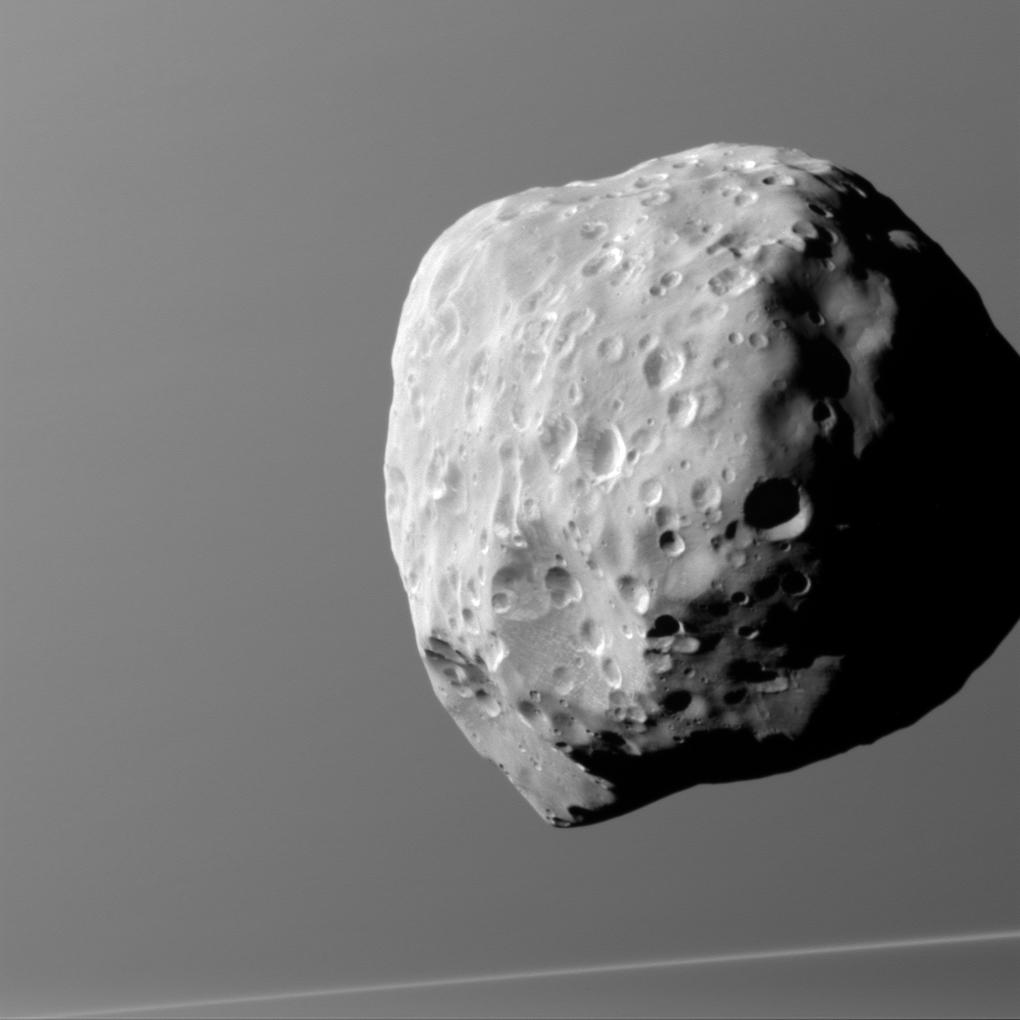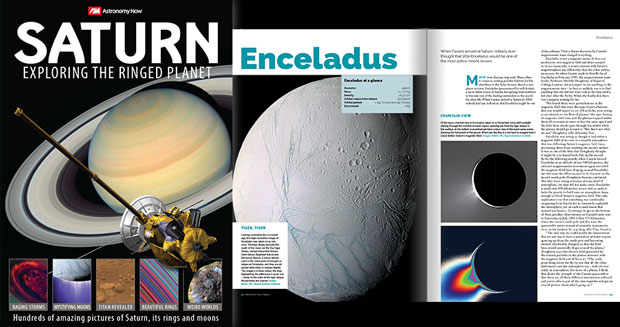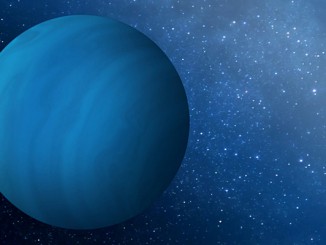
Life is hard for a little moon. Epimetheus, seen here with Saturn in the background, is lumpy and misshapen, thanks in part to its size and formation process. Epimetheus did not form with all of those craters in place — rather, bombardment over the eons has left this tiny moon’s surface heavily pitted.
Epimetheus, 113 kilometres (70 miles) across, is too small to have sufficient self-gravity to form itself into a round shape, and it has too little internal heat to sustain ongoing geological activity. Thus, its battered shape provides hints about its formation, and the myriad craters across its surface bear testament to the impacts it has suffered over its long history.
North on Epimetheus is up and rotated five degrees to the left. The image was taken in visible light with the Cassini spacecraft narrow-angle camera on 6 December 2015.
The view was obtained at a distance of approximately 2,690 kilometres (1,670 miles) from Epimetheus. Image scale on Epimetheus is 160 metres (520 feet) per pixel.
Saturn: Exploring the Ringed Planet
Find out more about Saturn and its moons in this 196-page special edition from Astronomy Now. Order from our online store.




